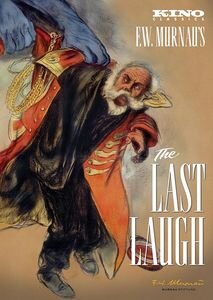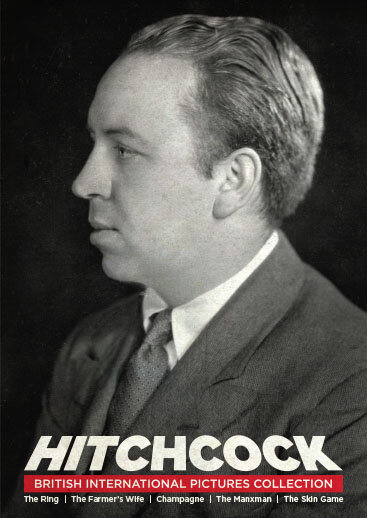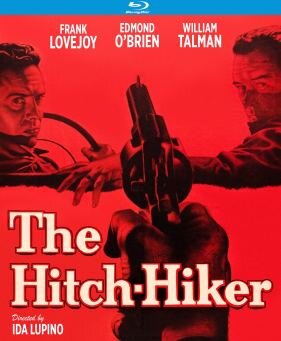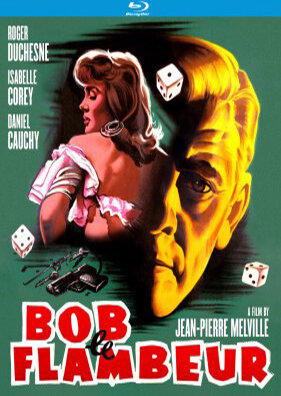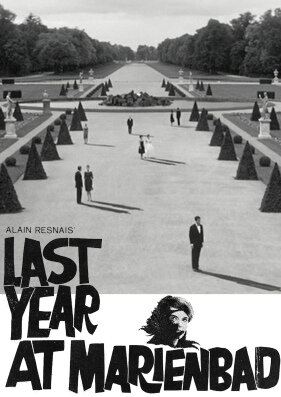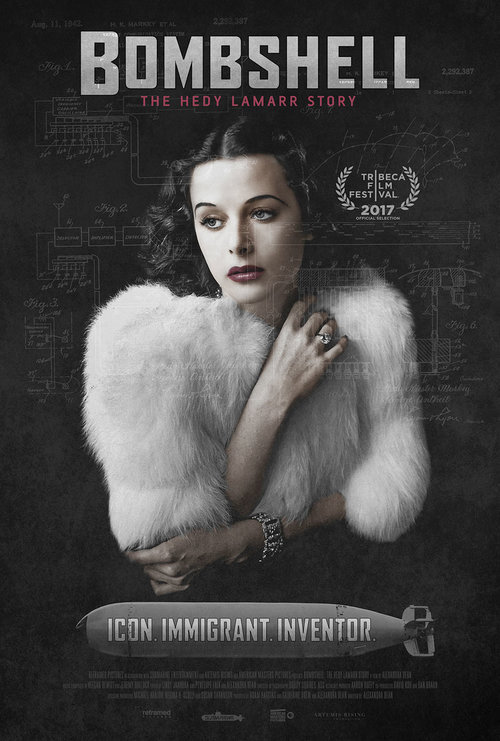GME Announces Exclusive Partnership with Kino Lorber to Distribute Classic Films as Digital Site Licenses to the North American Educational Market
/GME is proud to announce an exclusive partnership with the renowned theatrical and home video distributor Kino Lorber, in order for a premiere selection of moving image classics to be made available as Digital Site Licenses for the North American university market. Kino Lorber, Inc. was founded in 2009 by industry veterans Donald Krim and Richard Lorber. Combining the staffs, libraries and resources of Kino International, Lorber Films and Alive Mind Cinema, Kino Lorber has quickly become new leader in distributing the finest Art-house and International films, including complementary third-party film labels such as Zeitgeist Films, Cohen Film Collection, Metrograph Pictures and others. In announcing this new collaboration, Kino Lorber President and CEO Richard Lorber has written:
“Jon Gartenberg and I became friends too many years ago to admit when were both working at the Museum of Modern Art so it’s an overdue reunion to have the chance to collaborate anew. We could have no better partner than Gartenberg Media Enterprises in releasing expanded editions to the educational market some of the most important films from the Kino Lorber collection. Jon’s well-earned reputation for his dedication to film history and commitment to the unique and enduring value of film as an educational resource make him an ideal partner. We look forward to growing this relationship in the future.”
This partnership allows GME to expand its curated selection of distribution titles in significant fashion. The addition of these key Kino Lorber titles enables GME to interrelate them historically with other titles already represented in our extensive distribution catalog. For this initial outing, we offer 10 Kino Lorber titles, encompassing classic films from the silent and sound film era, as well as genre movies and documentaries. These titles were carefully selected by GME President and curator Jon Gartenberg not only for their historical importance, but also for the outstanding quality of these releases, many in high-quality 2K and 4k transfers through such reputable companies as L’Immagine Ritrovato (Bologna) and Studio Canal (Paris). Other partners in these digital releases include BFI Film Forever, the Film Foundation, the Academy of Motion Picture Arts and Sciences, and The Museum of Modern Art.
All the films in this selection are available for purchase either in DVD or Blu-ray format, as DVD or Blu-ray/DSL bundles, or as digital files for streaming on the university user’s internal internet system.
◊
From the silent era, we offer films by key directors F.W. Murnau and Alfred Hitchcock.
One of the crowning achievements of the German expressionist movement, THE LAST LAUGH (DER LETZTE MANN, 1924), directed by Friedrich Wilhelm Murnau (PHANTOM, 1922), stars Emil Jannings as an aging hotel doorman whose happiness crumbles when he is relieved of the duties and uniform which had for years been the foundation of his happiness and pride. Through Jannings’s colossal performance, THE LAST LAUGH becomes more than the plight of a single doorman, but a mournful dramatization of the frustration and anguish of the universal working class.
Before he became known as the Master of Suspense in Hollywood, Alfred Hitchcock had already established himself as a precociously talented filmmaker in England. HITCHCOCK: BRITISH INTERNATIONAL PICTURES COLLECTION brings together five features he directed for the production company. Four of them are visually dynamic silent films: the atmospheric boxing drama THE RING (1927), sprightly comedies THE FARMER'S WIFE and CHAMPAGNE (both from 1928), and a love triangle set on the Isle of Man, THE MANXMAN (1929). These lesser-known Hitchcock films were made by the director between the success of THE LODGER (1927), a murder mystery centering around a serial killer, and BLACKMAIL (1929), which was released in both silent and sound versions. Also included in this set is the 1931 sound feature THE SKIN GAME, a melodrama about feuding families.
◊
GME augments its offerings of genre films to the university market with 2 films by Ida Lupino and the first feature film directed by Curtis Harrington.
Ida Lupino made a unique mark as a film director in the post-WWII era by focusing on social issue films that dramatically brought to the fore such taboo subjects as serial killers (THE HITCH-HIKER), bigamy (THE BIGAMIST), rape (OUTRAGE), out-of-wedlock birth (NOT WANTED), and polio (NEVER FEAR). In NEVER FEAR (1949), a beautiful young dancer (and her promising career) is suddenly crippled by polio. Her dance partner and fiancé wants to see her through her illness, but angry and self-pitying, she prefers to go it alone. Filmed in semi-documentary style, her father takes her to the Kabat-Kaiser Institute for rehabilitation, where she meets fellow patients on her tough road to recovery. Beyond its obvious cultural significance as the only classic film noir directed by a woman, THE HITCH-HIKER (1953) is perhaps better remembered as simply one of the most nightmarish motion pictures of the 1950s. Inspired by the true-life murder spree of Billy Cook, THE HITCH-HIKER is the tension-laden saga of two men on a camping trip (Edmond O'Brien and Frank Lovejoy) who are held captive by a homicidal drifter (William Talman).
Harrington's debut feature, NIGHT TIDE (1961), stars a youthful Dennis Hopper in his first leading role, as a sailor who falls in love. Set in a seaside amusement park in Venice, California, Harrington blends a romantic mystery story with elements of film noir and the horror genre. The characters, locations, motifs, and themes present in Harrington's PICNIC (1948) – an amorous couple, parental authority, the seaside locale, the presence of sea monsters, and death – are transformed by Harrington in NIGHT TIDE from an experimental vision into a suspenseful narrative. The location photography by Vilis Lapenieks, the studio cinematography by Floyd Crosby (HIGH NOON, 1952), and the jazzy, melodic score by David Raksin (LAURA, 1944), all enrich the brooding atmosphere of the film.
◊
From France, we present 3 French New Wave titles, ALPHAVILLE (1965), BOB LE FLAMBEUR (1956), and LAST YEAR AT MARIENBAD (1961).
BOB LE FLAMBEUR was Jean-Pierre Melville’s first foray into the stylized underworld which became his signature. As the neon is extinguished for another dawn, an aging safecracker and compulsive gambler named Bob (Roger Duchesne) navigates the treacherous world of pimps, moneymen and naïve associates while plotting one last score – the heist of the Deauville casino.
Suffused with wry humor, BOB LE FLAMBEUR melds the toughness of American gangster films with Gallic sophistication to lay the roadmap for the French New Wave. Jean-Luc Godard couldn’t have made BREATHLESS (1959) without BOB LE FLAMBEUR. Melville even appears in BREATHLESS, as a director interviewed by Jean Seberg, proclaiming his desire “to become immortal and then die.”
Jean Luc-Godard’s ALPHAVILLE (1965) combines the genres of dystopian science fiction and Film Noir. In his endless journey to mess with cinema’s conventions and tropes, Godard took the well-known cinema hero and transposed him into a sci-fi setting. Secret agent Lemme Caution (played by Eddie Constantine), is sent to the distant space city of Alphaville where he must track down and kill the inventor of the all-controlling computer Alpha 60. Diverging completely from such later science fiction films as 2001: A SPACE ODYSSEY (1968), STAR WARS (1977), BLADE RUNNER (1982), and THE MATRIX (1999), Godard brilliantly eschews futuristic sets and special props for actual Paris locations. Paris of the 1960s was undergoing a dramatic architectural and economic transformation that would see the unprecedented redesign and reconstruction of entire urban districts. Godard’s ALPHAVILLE, released in 1965, locates itself at the absolute epicenter of these changes.
Alain Resnais’ LAST YEAR AT MARIENBAD is a hypnotically beautiful puzzle box of a film, and one of the most influential in the history of cinema. The movie’s sensuous tracking shots and Delphine Seyrig's iconic Chanel gowns have become part of the cinematic lexicon. In a large international hotel in the European resort town of Marienbad, with a sumptuous but austere décor – a marble universe – a man (Giorgio Albertazzi) is convinced he met an enigmatic woman (Delphine Seyrig) the previous year at the same location, and perhaps had a flirtation. A second man (Sacha Pitoëff), possibly the woman's lover or husband, repeatedly intimidates the first man. Their relations unfold through shards of flashbacks that never quite fit into place, their lives a hall of mirrors that never reveal a true self.
◊
Finally, we present two stylistically different films – THE CONFORMIST and BOMBSHELL: THE HEDY LAMARR STORY – both of which thematically focus on the tension between conformity and resistance.
Bernardo Bertolucci’s THE CONFORMIST (1970) is a searing study of sexuality and politics set in 1930’s Italy, told through the character of repressed homosexual Marcello (played by Jean-Luis Trintignant). Through opulent visual storytelling, Bertolucci combines a flawless aesthetic with a deep emphasis on composition, design, and camerawork to slowly build a devastating portrait of the kind of personality that allows fascism to flourish. Repeatedly, the camerawork calls attention to itself in the French New Wave tradition: low camera angles rising to confront or trail after characters, as if the camera has been lying in wait; tracking shots that seem to follow the action from a surreptitious distance; and a few oblique angles that indicate both the main character’s completely askew moral compass and the increasingly distorted society in which he finds himself.
In the documentary vein, we are pleased to present a recent film about a former Hollywood icon, entitled BOMBSHELL: THE HEDY LAMARR STORY (2017). Famous as one of the most beautiful women in Hollywood, it was virtually unknown that actress Hedy Lamarr had a mind far more extraordinary than her public image, including her scientific work as an inventor. In BOMBSHELL, director Alexandra Dean weaves together live interviews with Lamarr’s children, friends and Hollywood figures; newsreels and still photographs; graphs, diagrams, and animation; as well as newly-discovered audio interviews of Lamarr telling in her own words the background story about her life both on and off the silver screen, especially her resistance to acquiescing to the Hollywood star system.



